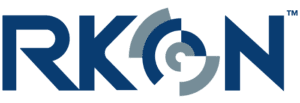As generative AI tools like ChatGPT and other advanced models continue to proliferate, organizations are faced with both exciting opportunities and unprecedented security challenges. This article delves into the major risks associated with generative AI as well as the security frameworks and AI security best practices that can help mitigate these risks.
1. Generative AI Security Concerns
One of the foremost concerns surrounding AI is data privacy. Inputs into generative AI models could potentially become part of the model’s future outputs, making AI prompt best practices complicated. This means sensitive or proprietary information, if shared with AI systems, may inadvertently be exposed to other users. A notable example involves Amazon, which warned employees after AI-generated code closely resembled internal proprietary code.
OpenAI and other companies have implemented safeguards to mitigate these risks. For instance, OpenAI now allows users to disable chat history to limit data retention and sharing. Additionally, OpenAI has introduced privacy controls that allow users to manage data usage, ensuring sensitive information is not inadvertently exposed. Businesses should also consider implementing data anonymization techniques or using enterprise-grade AI solutions that offer enhanced privacy features.
Generative AI models are susceptible to sophisticated cyberattacks, such as ‘prompt injection’ attacks, where malicious actors manipulate the AI to reveal confidential information. Prompt injection attacks involve manipulating the input prompts given to the AI to trick it into revealing sensitive information. With the risk of hackers gaining access to stored AI data, organizations must be vigilant in safeguarding these systems by implementing strict access controls and conducting regular security audits of AI platforms.
2. Risks of Unreliable AI Outputs
While AI promises enhanced productivity, its outputs can sometimes be flawed, presenting additional risks:
- Factual Inaccuracies: AI-generated responses may seem accurate but contain subtle errors. Relying solely on AI-generated information, especially in critical decision-making processes, can lead to incorrect conclusions or actions.
- Hallucinations: AI may produce content not based on its training data or factual reality. This is particularly important in contexts where accuracy is critical, such as in healthcare or legal applications. Therefore, human oversight is crucial to validate AI outputs.
- Bias and Outdated Information: AI models can perpetuate biases found in their training data, and without real-time updates, they may provide outdated information. To minimize biases and ensure relevance, it is recommended to periodically review and retrain AI models with up-to-date and diverse datasets.
3. AI Security Best Practices & Frameworks
To counter these risks, RKON recommends a robust AI cybersecurity framework that incorporates the following:
Regulatory Readiness and Governance
Establish transparent governance protocols to manage AI systems and ensure compliance with data privacy regulations, such as GDPR and CCPA, which impose strict requirements on data processing and user consent. Update security assurance programs to reflect AI-specific risks and align with industry standards like ISO/IEC 27001 or the NIST AI Risk Management Framework.
Conduct comprehensive risk assessments to evaluate the potential vulnerabilities of AI models. Include adversarial testing to simulate real-world attack scenarios and identify model weaknesses. Implement standard security testing for AI models and their underlying platforms, including adversarial testing to simulate attacks. Continuous monitoring and threat intelligence integration should also be part of the security strategy to ensure ongoing vigilance.
From model selection to deployment, businesses should implement security controls across the entire AI lifecycle:
- Model Training and Optimization: Secure the data used for training and ensure that models are rigorously tested for vulnerabilities. Employ data encryption, anonymization, and access controls during the training process to safeguard sensitive data.
- Model Monitoring and Maintenance: Continuous monitoring is essential to detect and address security threats as they arise. Establish an AI model monitoring protocol that includes anomaly detection and performance analysis to promptly identify and mitigate risks.
4. Building an AI-Aware Workforce
An essential component of AI security is developing awareness across the organization. RKON emphasizes the importance of educating executive leadership, developers, and data scientists about the specific risks posed by generative AI. Implement regular training sessions and security awareness programs tailored to different roles within the organization, focusing on AI-specific security challenges and best practices. This includes creating awareness programs to foster a culture of security and vigilance. Empower teams to recognize potential AI misuse scenarios and encourage responsible AI adoption practices to build a resilient security posture.
Conclusion
Generative AI offers immense potential for innovation and is crucial to gain a competitive advantage. Still, with it comes a complex array of security challenges. By following AI security best practices—focused on data privacy, security assessments, and continuous monitoring—businesses can safely leverage the power of AI without compromising their security posture. Organizations should adopt a proactive approach to AI security by regularly reviewing their AI systems and updating their security measures in response to emerging threats.
For organizations looking to dive deeper, RKON’s Security Advisory provides a detailed roadmap for securing generative AI systems and ensuring their responsible implementation across the business. Although AI security best practices are constantly evolving to adapt to the way modern enterprise innovate and work, having a trusted IT partner can optimize your digital landscape. Talk to an expert today.

